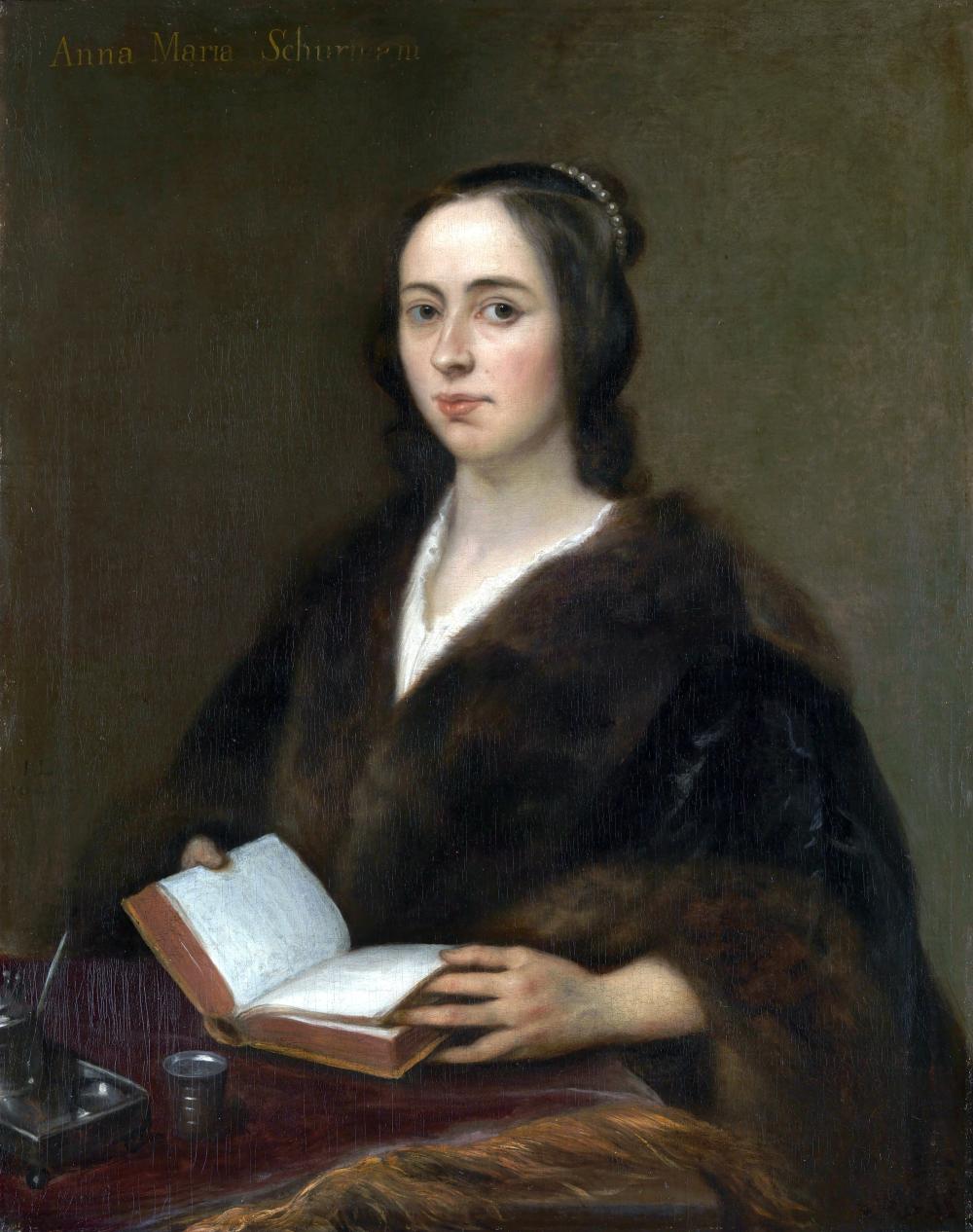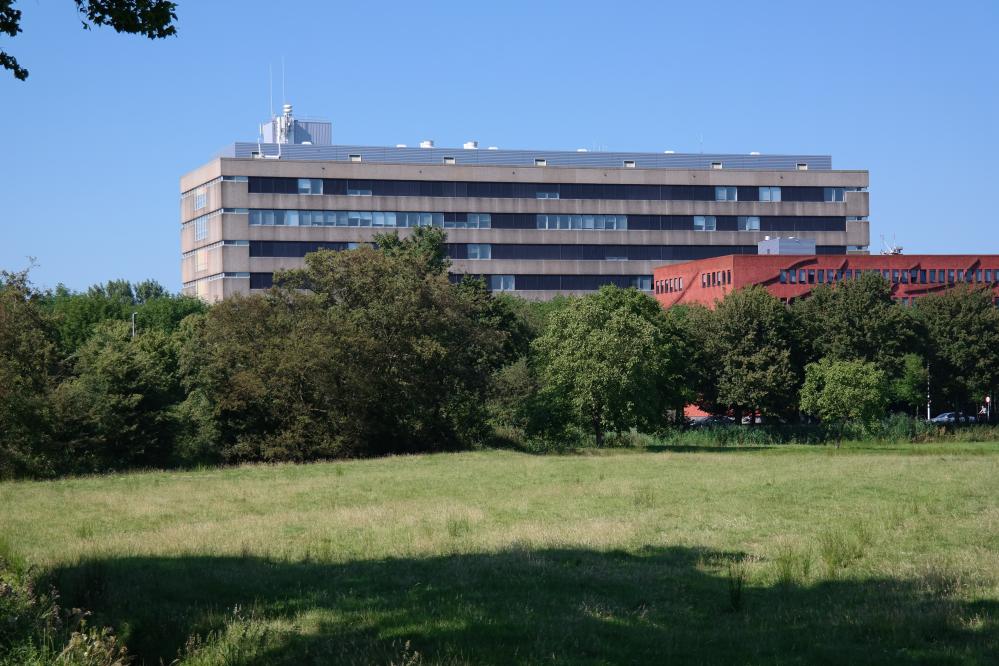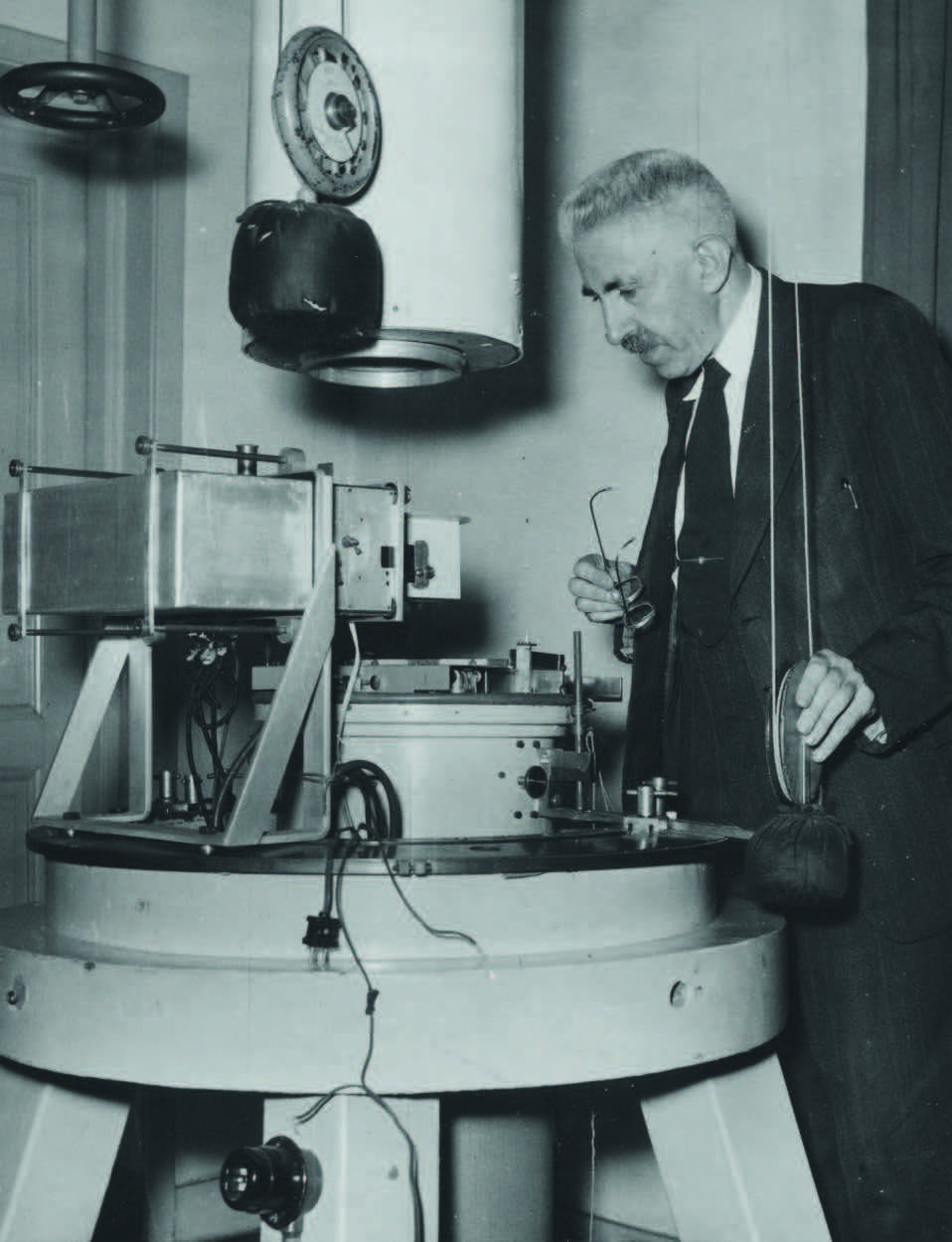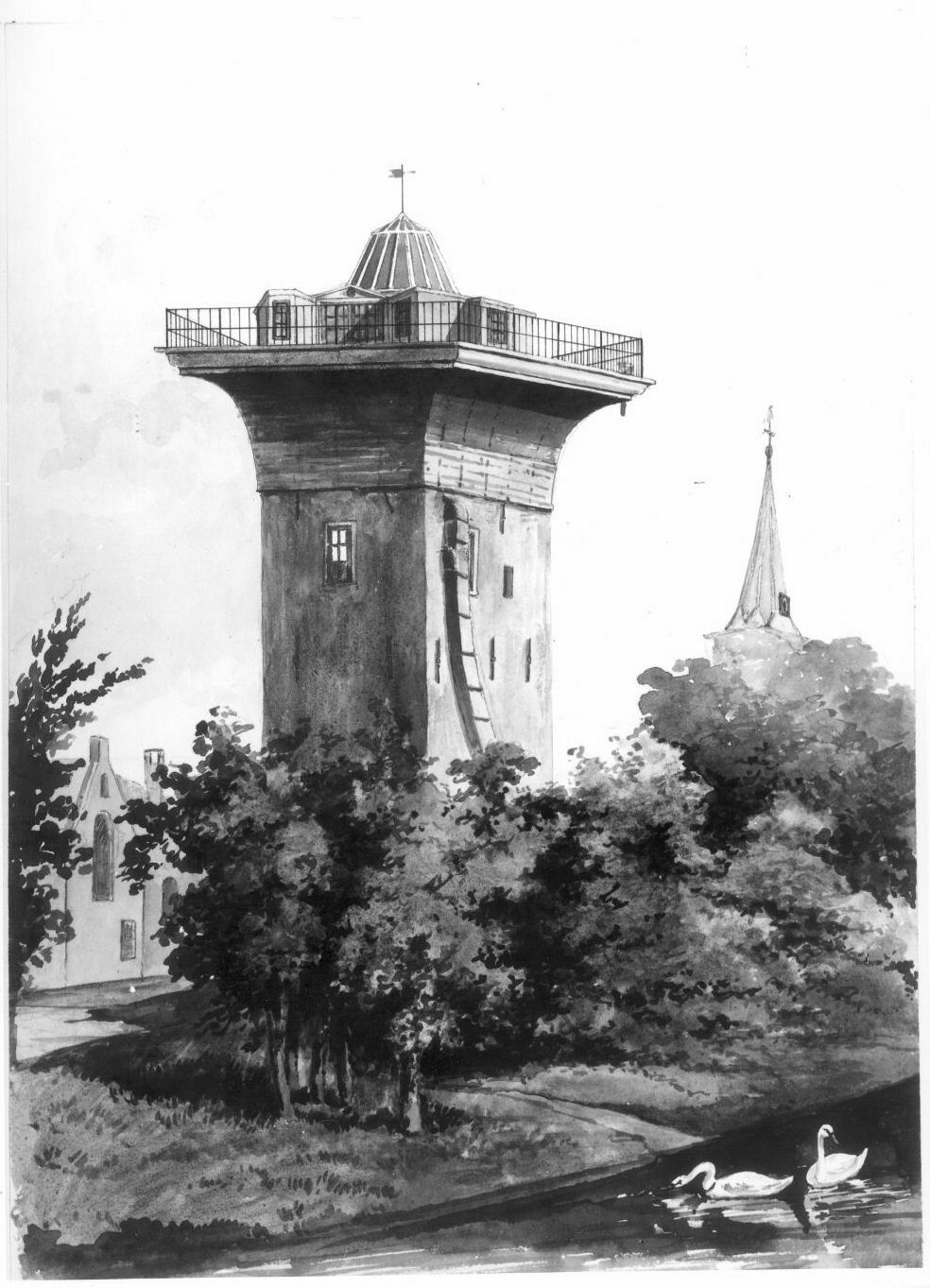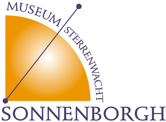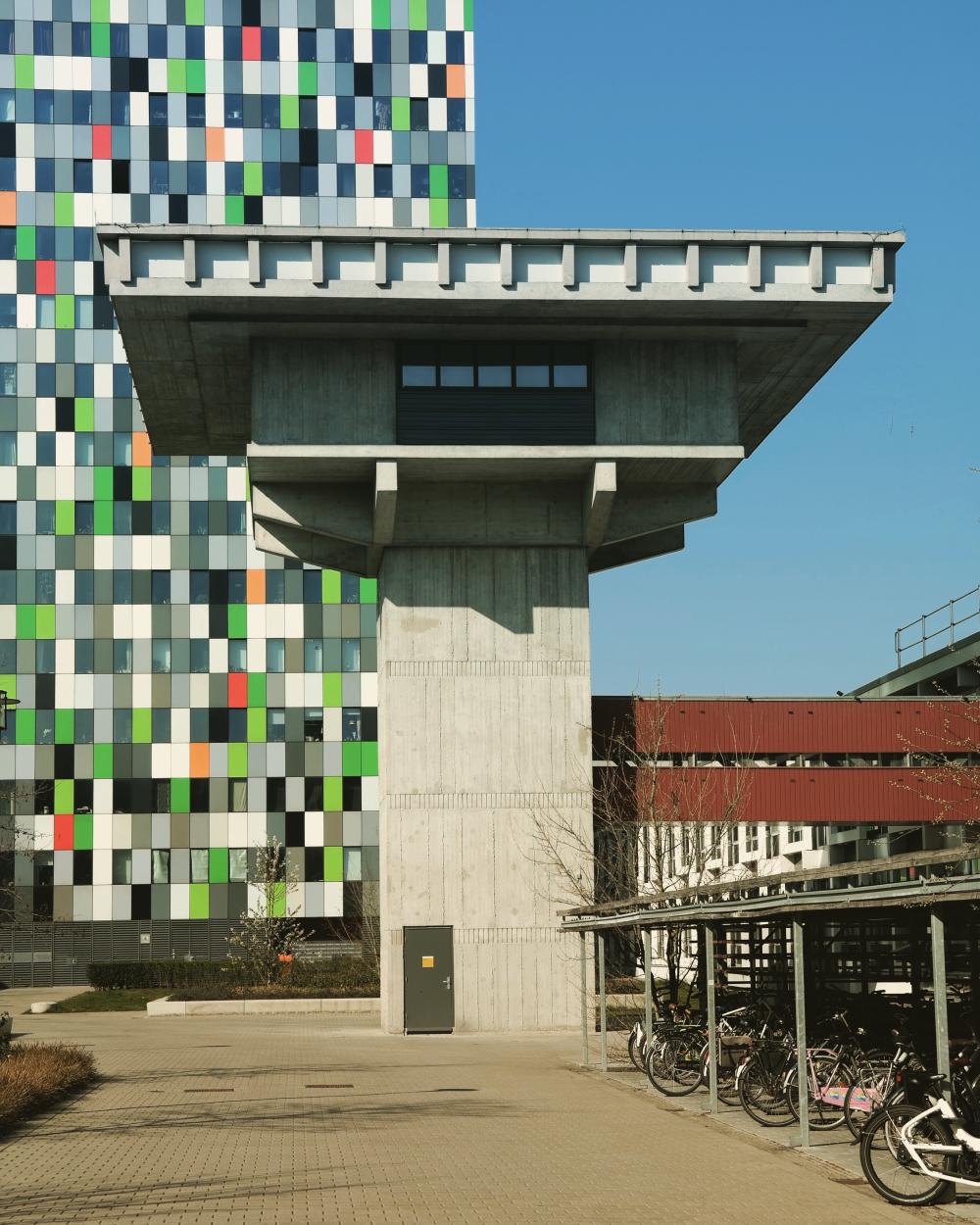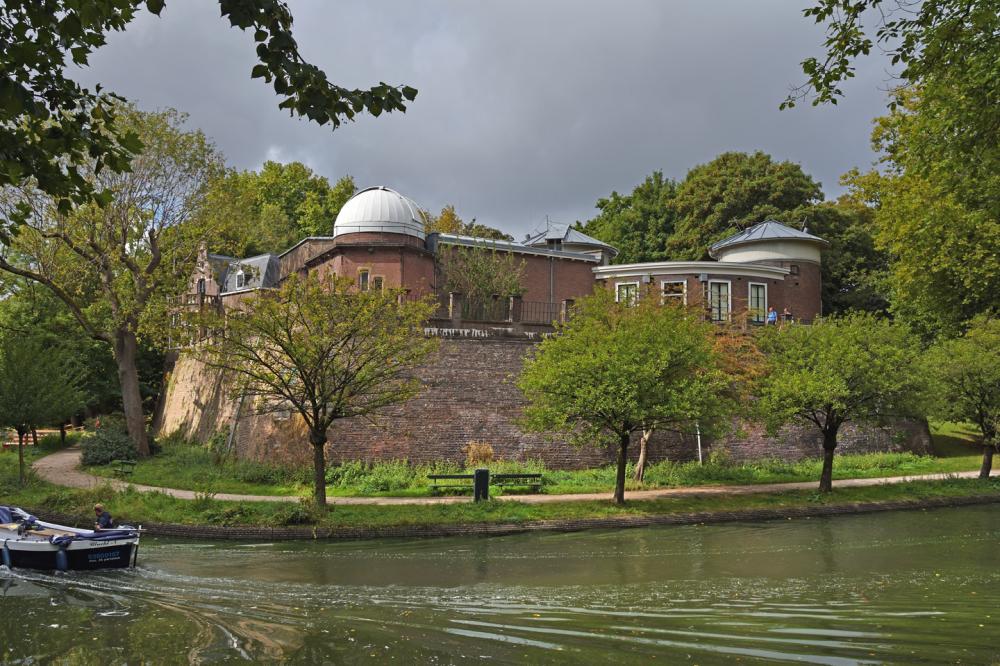
Category of Astronomical Heritage: tangible immovable
Sonnenborgh Observatory, Utrecht, Netherlands

Description
Geographical position
Sonnenborgh - Museum & Sterrenwacht Utrecht,
Zonnenburg 2, 3512 NL Utrecht
Location
Latitude 52°05'07''N, Longitude 05°07'45''E. Elevation 8m above mean sea level.
IAU observatory code
015
Description of (scientific/cultural/natural) heritage

Fig. 1. Smeetoren Observatory in Utrecht (1642), (City archive of Utrecht)
Smeetoren Observatory (1642--1853)
A first university observatory was built on Smeetoren 1642 / 1725.
In the mid-19th century, Professor Buys Ballot arranged for the Smeetoren Observatory, where meteorological observations were already being made, to move to the Sonnenborgh. After chemistry, Christophorus Henricus Diedericus Buys Ballot (1817--1890) focused primarily on meteorology, and in 1854, he founded the Royal Netherlands Meteorological Institute (KNMI) at this location.

Fig. 2a. Sonnenborgh Observatory Utrecht (1853), (CC)
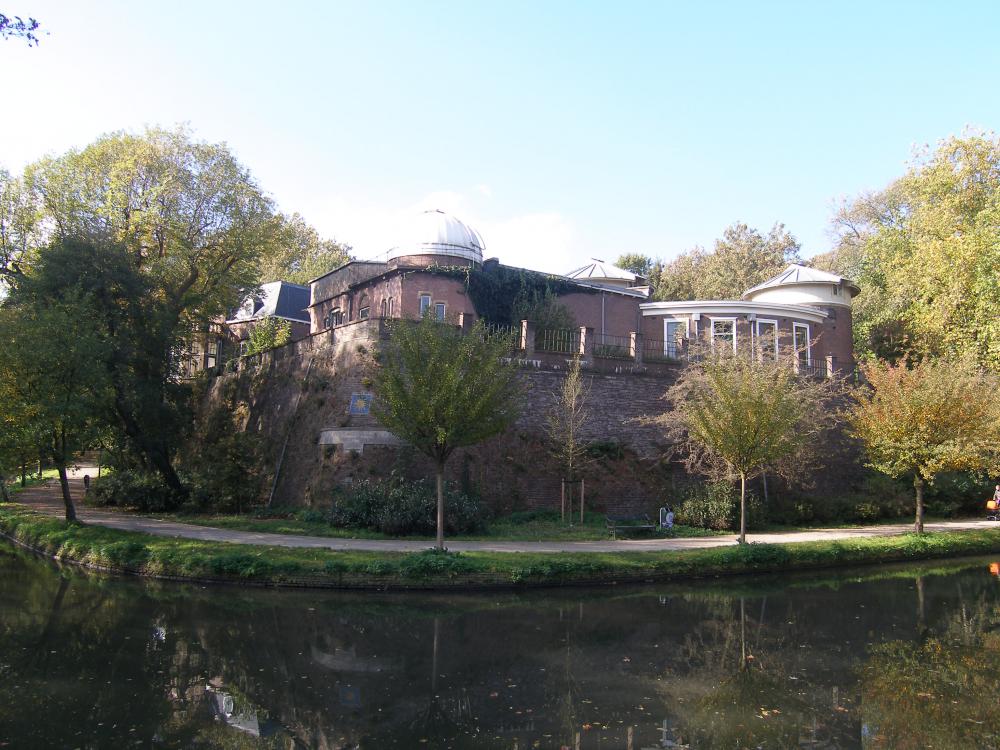
Fig. 2b. Sonnenborgh Observatory Utrecht (1853), (CC3, Japiot)
Sonnenborgh Observatory (1853--1987)
The second observatory is Sonnenborgh (1853) -- the name of the southeastern bastion of the historic fortification of the city of Utrecht in the Netherlands.
Emperor Charles V commissioned four stone bastions to be built on the inner side of the Stadsbuitengracht canal between 1544 and 1558 in order to defend the city of Utrecht. Sonnenborgh bastion was built under the direction of city architect Willem van Noort (1552).
Utrecht University was founded in 1636, and in 1639, the bastion was partially equipped with an academic herb garden by the botany professor Henricus Regius - Henri Le Roy (1598--1679). In 1724, the garden moved to Lange Nieuwstraat in Utrecht (the current Oude Hortus).
The north tower houses a Fraunhofer telescope from 1826, now combined with a Bernard Lyot H-alpha filter, for solar observation.
The 260-mm-Refractor in the south tower dates back to 1863, and was fitted with a lens from the Merz company in 1888. Between the north and south towers is the Meridian Hall with the meridian circle.
In Sonnenborgh was from 1854 to 1897 the Royal Netherlands Meteorological Institute (KNMI). The director from 1854 to 1890 was Christophorus Henricus Diedericus Buys Ballot (1817--1890).
In 1897, KNMI moved under the leadership of director Maurits Snellen (1840--1907) to De Bilt near Utrecht.
Since 1897, Sonnenborgh was entirely devoted to astronomy.
Well-known directors of the observatory were Jean Abraham Chrétien Oudemans (1827--1906), Martin Hoek (1834--1873), and Albertus Antonie Nijland (1868--1936).
Famous researchers, associated with Sonnenborgh:
From 1937 to 1963, Marcel Gilles Jozef Minnaert (1893--1970) was director of the Observatory, and used to live there. He was a pioneer of solar research, specialized in spectroscopy, the study of stellar atmospheres, and he invented the spectroscopic curve of growth. Research focused on the study of the Sun. An important publication in 1940 was the Utrecht Atlas of the Spectrum of the Sun.
From 1964 to 1977, Minnaert's PhD student Cornelis (Kees) de Jager (1921--2021) was appointed as director.
History

Fig. 3a. Meridian circle, Sonnenborgh Observatory Utrecht (1824), (CC0, Hobbema)

Fig. 3b. Merz Refractor, Sonnenborgh Observatory Utrecht, (CC0, Hobbema)
Instruments of Sonnenborgh Observatory
- Meridian circle, made by William Simms (1793--1860) of London (1824),
in the Meridian Hall between the north and south towers. - 11.5-cm-Fraunhofer Refractor (f = 193cm), made by Joseph von Fraunhofer & Joseph von Utzschneider of Munich (1826),
for solar observation, now combined with a Bernard Lyot H-alpha filter -- in the north tower. - 10-inch-Merz-Refractor, optics made by Merz of Munich (1845)
- Large 26-cm-Refractor with wooden tube, made by Steinheil of Munich (1863),
new objective lens (f = 319cm), made by Merz of Munich (1888) -- in the south tower. - Coelostat, which directs sunlight into the solar room, was used to create the famous Utrecht Solar Atlas (a photometric atlas of the solar spectrum) in 1940.
- 20-cm-Lichtenknecker VAF 200 achromatic refractor and a Celestron 14 reflector telescope
for nighttime observation of planets and nebulae -- in the domed east tower.

Fig. 4a. Marcel Gilles Jozef Minnaert (1893--1970), (CC0)

Fig. 4b. Cornelis (Kees) de Jager (1921--2021), (CC3, Rob Rutten)
Directors of Sonnenborgh Observatory
1854 to 1890 -- Christophorus Henricus Diedericus Buys Ballot (1817--1890)
1859 to 1873 -- Martin Hoek (1834--1873)
1876 to 1898 -- Jean Abraham Chrétien Oudemans (1827--1906)
1898 to 1936 -- Albertus Antonie Nijland (1868--1936)
1937 to 1963 -- Marcel Gilles Jozef Minnaert (1893--1970)
1964 to 1977 -- Cornelis (Kees) de Jager (1921--2021)
....
2005 to 2011 -- Christoph U. Keller
State of preservation
The bastion is a Rijksmonument, Monument number 18403, built in 1544--1558.
It was designated a "Historic site" by the European Physical Society in 2021.
Comparison with related/similar sites
It is an observatory, built on a bastion like e.g. Nuremberg Castle Observatory (1677 to 1757) or like Oude Sterrewacht Leiden (1860).
Threats or potential threats
no threats
Present use
Sonnenborgh houses the Astronomical Public Observatory of the University of Utrecht, which is also used as a museum today and attracts 60,000 visitors a year together with the University Museum.
A coelostat directs sunlight into the solar room, which is accessible to visitors. This device was used to create the famous <i>Utrecht Solar Atlas</i> (a photometric atlas of the solar spectrum) in 1940.
Until 2013, Sonnenborgh was also the headquarters of the "De Koepel Foundation", a Dutch umbrella organization for the popularization of astronomy, meteorology and space travel.
Since 2022, Giovanni Stijnen is the director.
Astronomical relevance today
Sonnenborg is no longer used for scientific research.
In 1987, the Astronomical Institute moved from the Sonnenborgh to the "Buys Ballot Laboratory" in De Uithof. The "Netherlands Space Research Foundation" had already been located there since 1983. A star tower with space for telescopes had also been located there since 1962, but it was never used.
In 2012, the famous astronomy institute in Utrecht with such a long history was closed completely.
References
Bibliography (books and published articles)
- Heijmans, H.G.: Wetenschap tussen universiteit en industrie. De experimentele natuurkunde in Utrecht onder W.H. Julius en L.S. Ornstein 1896--1940. Rotterdam: Erasmus Publishing 1994.
- Jager, Kees de & H.G. van Bueren en M. Kuperus: Bolwerk van de sterren. Amersfoort: Uitgeverij Bekking 1993.
- Klück, B.: Utrecht - Bolwerken, Archeologische Kroniek Provincie Utrecht 2000-2001, blz 108-112. Utrecht: PlantijnCasparie 2002.
- Lunteren, Frans van: Sonnenborgh en de Utrechtse zonnefysica. In: Nederlands Tijdschrift voor Natuurkunde, Juli 2024, p. 24.
- Molenaar, L.: Marcel Minnaert astrofysicus 1893--1970. De rok van het universum. Amsterdam: Balans 2003, (https://www.dbnl.org/tekst/).
- Witt, Volker: Historische Teleskope in niederländischen Museen. In: Sterne und Weltraum 45 (2006), nr. 9, S. 78-82.
- Zuidervaart, H.J.: Reflecting `Popular Culture': The Introduction, Diffusion, and Construction of the Reflecting Telescope in the Netherlands. In: Annals of Science 61 (2004), p. 407-452.
Links to external sites
Links to external on-line pictures
no information available
No multimedia content published
Currently there is no multimedia content published for this case study






